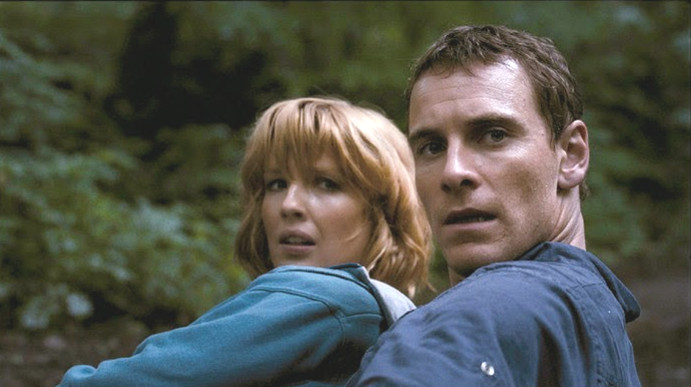
For the first decade of the new millennium, mainstream horror cinema was largely stagnant. After Michael Bay’s 2003 reimagining of the Texas Chainsaw Massacre proved a huge success, the era of horror remakes officially commenced and major studios went hog-wild resurrecting beloved classics one after another. In the 80’s horror rip-offs were a dime a dozen, but many of these possessed an undeniable life of their own.
By the year 2000, the rip-off had become the remake, and the finished products were, more often than not, lifeless. In any era, with any form of art, you have to dig deep to find the good stuff; listed below are ten worthwhile films that got buried beneath the surface.
1. Shadow of the Vampire (2000)
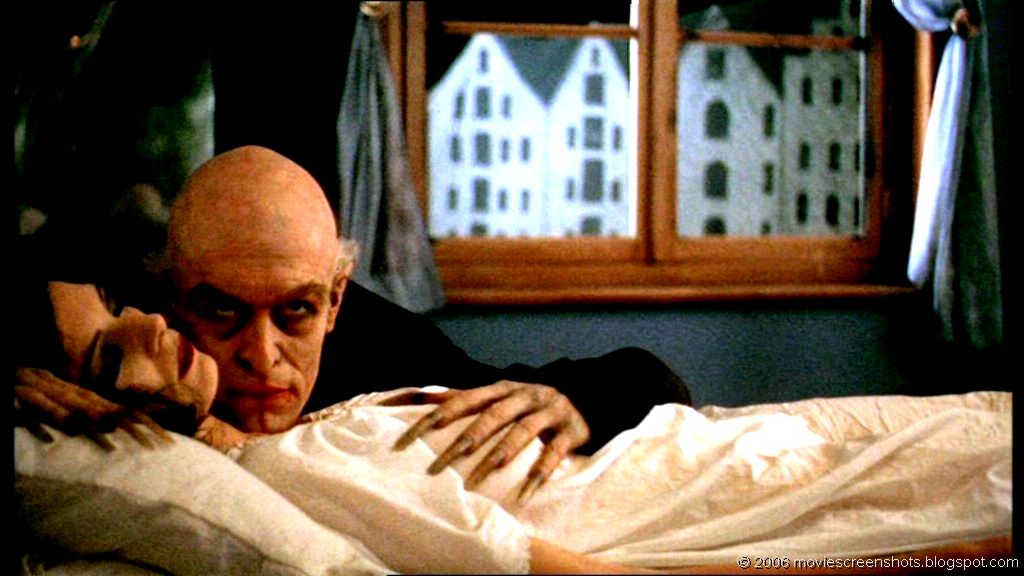
Horror film, dark comedy, period piece, revisionist history: E. Elias Merhige’s Shadow of the Vampire is a wildly ambitious work that somehow manages to succeed on every level. A fictionalized account of the 1922 production of F.W. Murnau’s Nosferatu, the vampire here is not a thespian but rather an honest-to-god centuries-old bloodsucker who has agreed to star in Murnau’s passion project.
Naturally he requires payment, and vampires aren’t known for having bank accounts. John Malkovich (as Murnau) and Willem Dafoe (Max Schreck) play fantastically off one another, clearly relishing the chance to deliver such sharp, witty dialogue (“Did I kill one of your people, Murnau? I can’t remember.”).
While a sense of gallows humor is ever-present, much of Shadow is played straight. Malkovich and Dafoe spout countless quotable lines but take their roles quite seriously; the film’s dramatic aspects are emphasized by its score, performances, overall aesthetic. Lou Bogue’s cinematography is lush and elegant, evocative of the silent film era.
Supporting parts are impeccably cast, with Udo Kier and, surprisingly, Cary Elwes standing out in particular. Something wholly unique was created here. Shadow is very much an exercise in art-house horror, but one that was crafted for mainstream audiences and always intended for a wide theatrical release (it was produced by Nicolas Cage’s company, Saturn Films).
Pacing is quick and the narrative clear, fluid, never weighed down by the films lofty ideas. Shadow of the Vampire both contemplates and titillates, enlightens and entertains. It’s hilarious, thought-provoking, and chilling all at once. A stone-cold masterpiece.
2. Ricky 6 (2000)
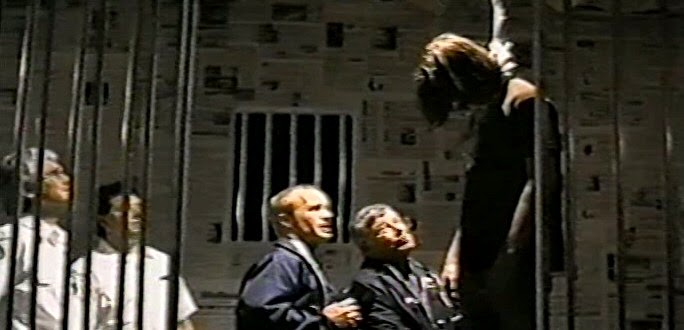
Ricky 6 is based on the true story of Ricky Kasso, a satan-worshipping drug dealer who murdered fellow Long Island teenager Gary Lauwers in 1984. Kasso (known amongst peers as ‘Acid King’) and his circle of friends permanently lived their lives in a drug-soaked haze, mainly ingesting hallucinogens, pot, and alcohol.
After Lauwers stole a minuscule amount of PCP from Ricky, he was viciously killed in retaliation; Kasso committed suicide shortly after being arrested and his accomplice, Jimmy Troiano, was acquitted of second-degree murder. Ricky 6 is the only directorial effort from screenwriter Peter Filardi, who penned the scripts for The Craft and Flatliners amongst others.
Filardi handles the fact-based material artfully and sensitively, if not always with historical accuracy. There are no flashbacks or flash-forwards, the events instead unfolding in chronological order as we witness Ricky transition from awkward outcast to dark-side-dabbler to drug-crazed believer.
Kasso was, in all likelihood, a paranoid schizophrenic who exacerbated his problems with the use of mind-altering substances, and Filardi wisely recognized how important drugs were to this tragic story. Ricky 6 excels in its handling of the hallucination scenes. They’re subtle and well performed, the visuals tasteful, the zonked-out dialogue finely tuned.
Vincent Kartheiser tackles the part of Ricky (here given the last name Cowen) with amazing confidence, all the more impressive considering he was only 20 years old at the time. It’s as though we’re gradually witnessing a young man part with his soul.
Setting, mood, and character have been established so carefully that, when the infamous killing occurs, it hits like a ton of bricks. The music, from Joe Delia (an Abel Ferrara regular), is focused and thematic, multi-layered, the polar opposite of so many movie scores nowadays. Delia’s gentle, somber main theme perfectly captures the essence of this horrific account.
Apparently tied up in financial difficulties, Ricky 6 has not officially seen the light of day in any form. It was never granted a theatrical release, wasn’t distributed on home media. Bootleg copies have floated around the internet for years and several grainy, albeit watchable, prints are currently available on YouTube. Filardi has admitted in interviews a personal fascination with “that volatile cocktail of hallucinogens, metal, and magic”; Ricky 6 explores this mixture with phenomenal success.
3. King of the Ants (2003)
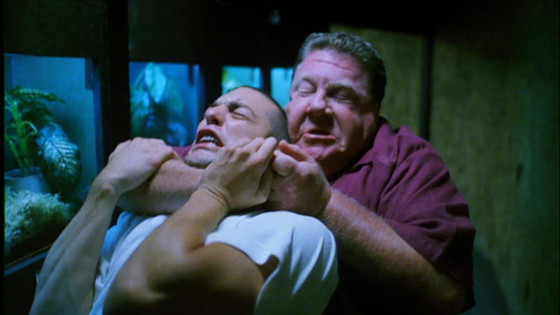
Few filmmakers are as overlooked or under-appreciated as Stuart Gordon. Primarily known for several H.P. Lovecraft adaptations (Re-Animator, From Beyond, Dagon), the man’s filmography is remarkably consistent. King of the Ants marked his first excursion into more earth-bound, human horror, and it’s quite possibly his finest hour.
Based on a novel by British author Charlie Higson, Ants tells the story of Sean Crawley, a down-on-his-luck young man trying to stay afloat in the modern world, drifting from job to job, lacking any real ambition. He’s hired by several shady businessmen to murder a colleague of theirs, performs the nefarious task, and is subsequently refused payment.
When Sean threatens to contact authorities unless he’s compensated, these unscrupulous individuals hatch a horribly vicious (and plausible) plan to solve their Sean Crawley problem. For fear of giving too much away, it’s best to remain vague when describing the plot of King of the Ants.
The events dart and pivot in a genuinely unpredictable fashion, always keeping the audience unsure of what’s in store. Gordon comes from a theatrical background and works very intimately with actors; even in his more outlandish monster movies, the performances are fairly restrained, natural. Lead Mark McKenna easily makes us root for Sean, despite the fact that he’s far from sympathetic.
The villains (Daniel Baldwin, Vernon Wells, Lionel Smith, George Wendt) are real-world monsters, simply ‘doing their job’ while partaking in deplorable acts of cruelty. George Wendt portrays Duke, the most sadistic baddie, and he’s utterly terrifying. You’ve never seen Norm from Cheers like this.
It’s an inspired bit of casting, and Wendt excels at making this character as despicable as possible. Uncompromisingly dark and violent, King of the Ants is one of the best American revenge pictures of the last twenty years, a twisted tale of amoral people doing terrible things.
4. Zombiez (2004)

Sometimes a film is so heinous, so astoundingly incompetent, that it morphs into some kind of gruesome jewel. Zombiez is one such cinematic butterfly. Shot on a consumer-brand DV camera, Zombiez is like a movie made by space aliens who possessed only a vague understanding of how people behave.
Utterly plotless, it opens with a young woman being chased through an urban setting by ferocious ‘zombiez’. I should take a moment, however, to describe this film’s idea of the living dead: a person in street clothes with fake blood running from their mouths. Sometimes they wield plastic scythes, seemingly purchased at Party City.
The undead of Zombiez are literally nothing more than a bunch of guys gathered together, usually with no discernible makeup of any kind. They glance into the camera lens, laugh, throw rocks, strike awkward poses. Some utter only monosyllabic grunts while others appear capable of speaking fluent English and, on one inexplicable occasion, they scatter at the sound of distant police sirens (one actually shouts, “Oh, snap!”).
Our protagonist, underdeveloped to the point of near-invisibility, darts from place to place and occasionally interacts with other living people, always with hordes of ‘zombiez’ at her heels. There appears to have been no script and direction is non-existent. In the world of Zombiez, story, logic, and characterization are for the birds.
By the hour mark, when you’re witnessing a drug dealer force a man, at gunpoint, to dance for him in chicken suit, you’ll either be doubled over with laughter or praying for the sweet release of death. The culprit responsible for Zombiez is writer/director John Bacchus, and he’s helmed several similarly-themed titles (Vampiyaz, Bloodz vs. Wolvez). They’re far more competently made but, weirdly, less compelling.
Strangest of all, Zombiez, which bears the markings of a wonky debut feature, actually appears smack in the middle of Bacchus’s filmography. The fact that Lion’s Gate distributed this mess is shocking, but we should be thankful they did. Zombiez, bizarre and aggressively terrible, is unintentional comedy at its finest. A prime candidate for late-night group viewing.
5. 100 Feet (2008)
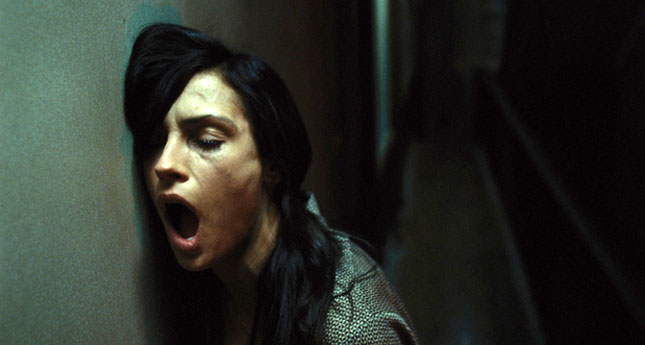
Eric Red is a filmmaker who understands efficient storytelling. He knows how to set a scene, how to develop a premise and characters using the sparse language of cinema. His films (Body Parts, Cohen and Tate) are lean, efficient, and almost always expertly plotted. With 100 Feet, Red took a crack at the ghost story, and in doing so addressed a nagging question that has plagued the haunted-house genre since its inception: “Why don’t these people just pack up and leave?”.
Marnie, the protagonist in 100 Feet, is under house-arrest, having murdered her abusive ex-husband in self defense. She can’t leave. Locked inside the dwelling she once shared with her former spouse, Marnie realizes that the vengeful spirit of her dead husband is still roaming the halls, fully intent on making her life a living hell. 100 Feet is a modest, intimate film that takes place entirely within one environment, and Red makes the most of his limited setting.
Every nook and cranny is explored, utilized to create a sense of menace: a dark basement, crawlspaces, a garbage disposal unit. Red’s picture is also notable for being one of the most violent haunting films in recent years. This is one seriously pissed-off spirit, possessing supernatural strength but dishing out very man-like beatings. The violence has a brutal, nasty edge, unusual for this particular sub-genre.
Acting is uniformly excellent, but the film belongs to Famke Janssen, as Marnie. Because of the close personal relationship Marnie once shared with her ethereal tormentor, the haunting here has an added layer of emotional resonance; Red’s script offers his lead plenty to work with, and she admirably rises to the challenge.
Both vulnerable and tough-as-nails, Marnie is a compelling, perfectly realized horror heroine. It’s no classic (there are a few instances of wonky CGI), but 100 Feet is a solid little ghost movie that deserves your attention.